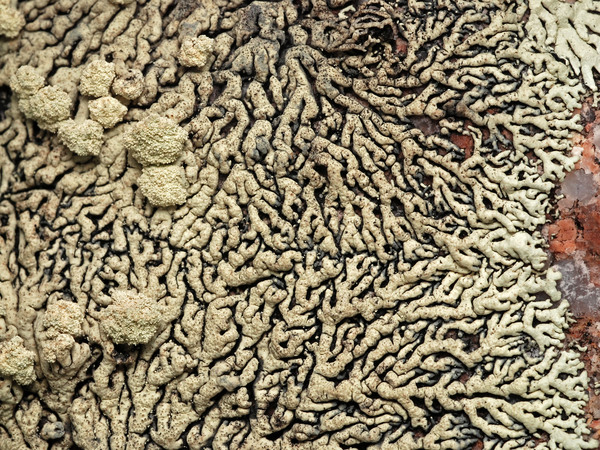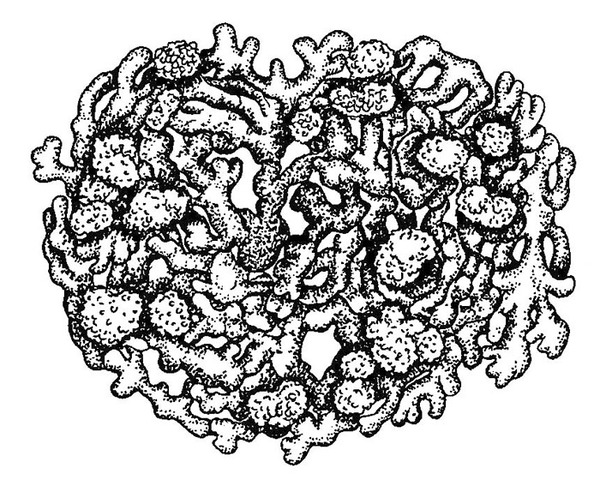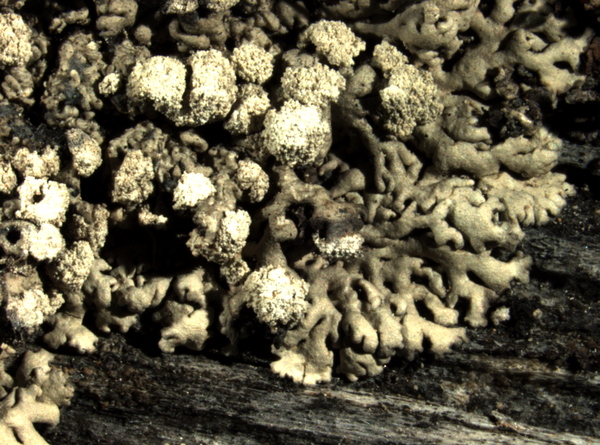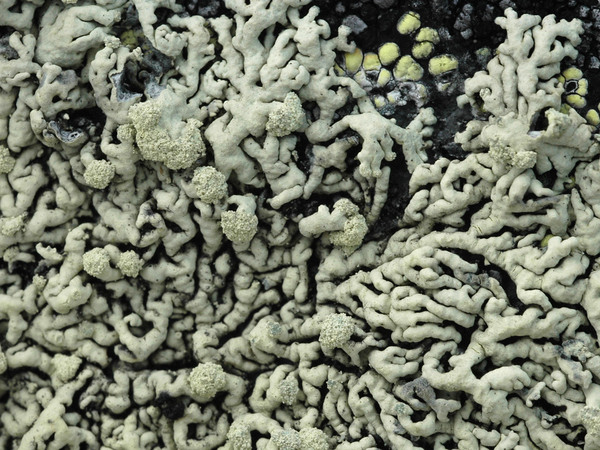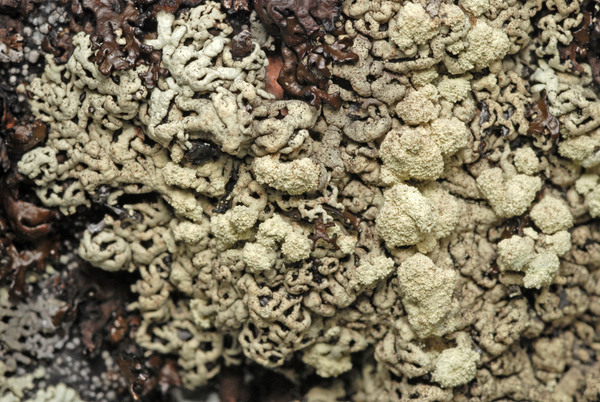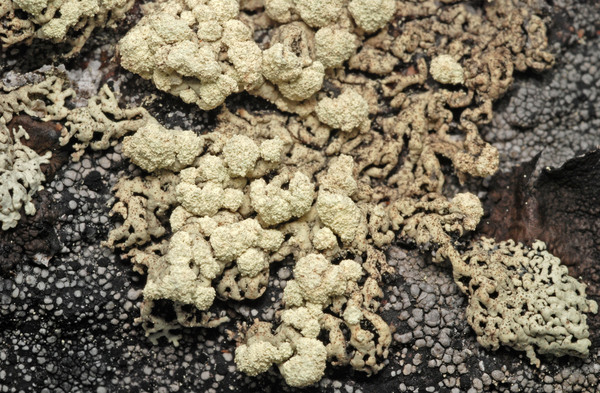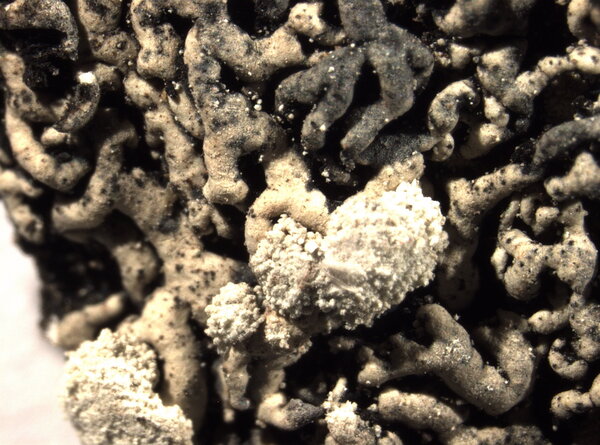Arctoparmelia incurva (Pers.) Hale
Mycotaxon, 25: 252, 1986. Basionym: Lichen incurvus Pers. - Ann. Bot. (Usteri), 7: 24, 1794.
Synonyms: Imbricaria incurva (Pers.) DC.; Parmelia incurva (Pers.) Fr.; Xanthoparmelia incurva (Pers.) Hale
Distribution: N - Piem (Isocrono & al. 2004, Isocrono & Piervittori 2008), Emil (Fariselli & al. 2020).
Description: Thallus foliose, heteromerous, dorsiventral, closely adnate, yellowish to yellowish green or yellowish grey, usually grey in central parts, rather glossy, sorediate, with elongated, 0.2-1.5(-3) mm wide, convex, often overlapping and radiating lobes, forming up to 10 cm wide (usually smaller), often confluent rosettes, sorediate. Soralia laminal, strongly convex and almost subglobose, 2-4 mm across, most frequent on the central lobes; lower surface pale brown, with sparse, black rhizines. Upper cortex of tightly packed, anticlinally oriented hyphae, with a pored epicortex, the cell walls with Cetraria-type lichenan; medulla white, not amyloid; lower cortex appearing velvety due to minutely papillose, projecting hyphae. Apothecia rare, lecanorine, 2-4 mm across, with a brown to brown-black disc and a smooth thalline margin. Epithecium brown; hymenium colourless, I+ blue; paraphyses sparingly branched, the apical cells slightly swollen; hypothecium colourless. Asci 8-spored, clavate, the K/I+ blue tholus penetrated by a faintly amyloid apical cushion with parallel or diverging flanks, the wall K/I-, surrounded by a K/I+ blue outer layer, Lecanora-type. Ascospores 1-celled, hyaline, ellipsoid, 9-12 x 6-8 μm. Pycnidia rare, laminal immersed, black. Conidia hyaline, bacilliform, 4-7 x c. 1 μm. Photobiont chlorococcoid. Spot tests: cortex K+ yellow, C-, KC+ pale yellow, P-; medulla and soralia K-, KC+ pink, P- or P+ rust-red, UV+ bright glaucous blue. Chemistry: cortex with usnic acid and atranorin; medulla with alectoronic acid and variable amounts of protocetraric and collatolic acids.
Note: a circumpolar, arctic-alpine to boreal-montane species found on steeply inclined, hard, acid siliceous rocks in cold, wind-exposed mountain summits
Growth form: Foliose, narrow lobed
Substrata: rocks
Photobiont: green algae other than Trentepohlia
Reproductive strategy: mainly asexual, by soredia, or soredia-like structures (e.g. blastidia)
Commonnes-rarity: (info)
Alpine belt: extremely rare
Subalpine belt: extremely rare
Oromediterranean belt: absent
Montane belt: extremely rare
Submediterranean belt: absent
Padanian area: absent
Humid submediterranean belt: absent
Humid mediterranean belt: absent
Dry mediterranean belt: absent

Predictive model
Herbarium samples
Growth form: Foliose, narrow lobed
Substrata: rocks
Photobiont: green algae other than Trentepohlia
Reproductive strategy: mainly asexual, by soredia, or soredia-like structures (e.g. blastidia)
Commonnes-rarity: (info)
Alpine belt: extremely rare
Subalpine belt: extremely rare
Oromediterranean belt: absent
Montane belt: extremely rare
Submediterranean belt: absent
Padanian area: absent
Humid submediterranean belt: absent
Humid mediterranean belt: absent
Dry mediterranean belt: absent

Predictive model
| Herbarium samples |
 Index Fungorum
Index Fungorum
 GBIF
GBIF
